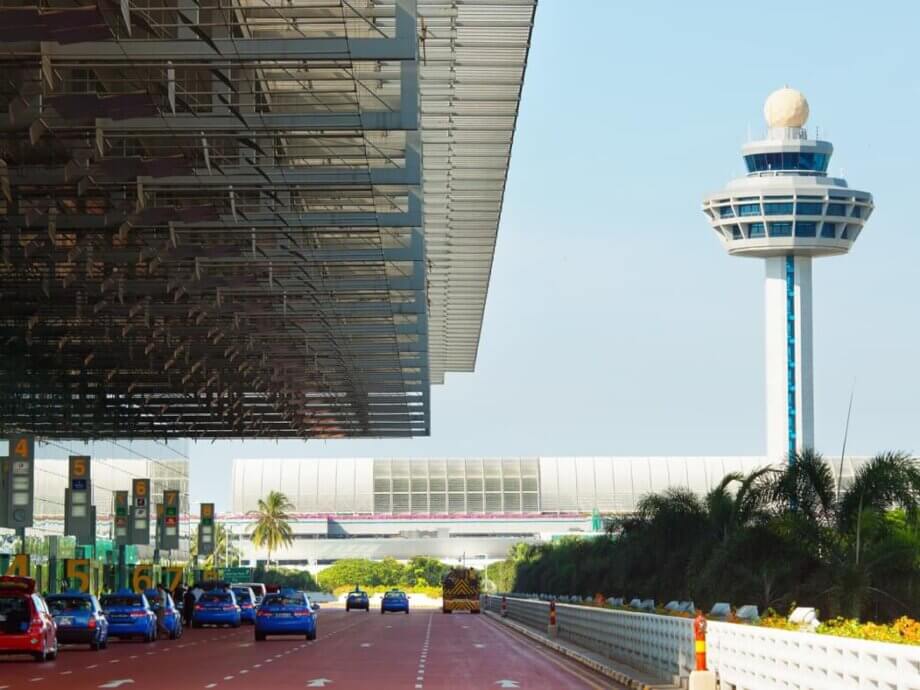Changi Airport Terminal 5: A Mega Expansion for a New Era
Singapore’s Changi Airport has long been recognized as one of the world’s premier aviation hubs, celebrated for its efficiency, innovation, and passenger experience. In May 2025, the city-state broke ground on its most ambitious airport project yet: Terminal 5 (T5). Scheduled for completion in the mid-2030s, T5 is set to transform Changi into a “mega airport,” boosting its annual passenger capacity from 90 million to 140 million and reinforcing Singapore’s status as a global gateway. This expansion is not just about handling more flights—it’s a strategic move to secure Singapore’s economic future in an increasingly competitive and dynamic region.
- Changi Airport Terminal 5: A Mega Expansion for a New Era
- Why Terminal 5? The Strategic Imperative
- Asia-Pacific: The World’s Fastest-Growing Aviation Market
- Terminal 5: Design, Capacity, and Innovation
- Economic Impact: Jobs, Investment, and National Growth
- Changi’s Competitive Edge: Innovation, Connectivity, and Experience
- Regional Competition: The Race for Mega Airport Status
- Risks and Challenges: Costs, Competition, and Changing Travel Patterns
- Broader Economic and Social Impact
- Looking Ahead: Building for the Next Generation
- In Summary
Why Terminal 5? The Strategic Imperative
For Singapore, Changi Airport is far more than a transportation hub. In a land-scarce nation with a small domestic market, the airport is a vital economic artery. It supports about 200,000 jobs and contributes roughly 5% of the country’s gross domestic product (GDP), underpinning sectors such as tourism, manufacturing, logistics, and advanced services. As Shukor Yusof, an aviation analyst at Endau Analytics, puts it:
“Changi is the lifeline of Singapore. Without a thriving, competitive airport, Singapore will collapse. The importance of Changi to Singapore’s existence can never be underestimated.”
This reliance was starkly highlighted during the COVID-19 pandemic, when border closures and the absence of domestic routes caused passenger traffic to plummet from 68.3 million in 2019 to just 3.1 million in 2021. Changi Airport Group (CAG) saw its revenue drop by 78% in the year ending March 2021, and Singapore’s economy contracted by 3.8%—its worst recession since independence.
With the pandemic behind, Singapore is now scaling up. The T5 project, delayed but not derailed by COVID-19, is a bold vote of confidence in the future of air travel and the city-state’s role in it. As Prime Minister Lawrence Wong stated at the groundbreaking:
“Over the longer term, air travel is on a rising trajectory, and the bulk of the growth will take place here in the Asia-Pacific region.”
Asia-Pacific: The World’s Fastest-Growing Aviation Market
The timing of T5’s construction is no accident. The Asia-Pacific region is projected to be the epicenter of global air travel growth for decades to come. According to Airports Council International (ACI) and the International Air Transport Association (IATA):
- Asia-Pacific handled 3.4 billion passengers in 2024, a 13% increase from the previous year.
- The region accounts for about 36% of global air traffic.
- Passenger numbers are expected to double by 2043, driven by rising incomes, urbanization, and the expansion of the middle class in countries like China, India, Vietnam, and Indonesia.
Stefano Baronci, Director General of ACI Asia-Pacific and Middle East, emphasizes the region’s potential:
“The epicentre… of aviation is Asia. There is a huge margin for growth, and the region still has a huge margin for growth, meaning saturation will only be a problem for the next generation, not within the next 20 to 30 years.”
To keep pace, airports across Asia and the Middle East are investing heavily. Hong Kong, Bangkok, Seoul, and Kuala Lumpur are all expanding their facilities, with some projects completing before T5. The competition for flights, passengers, and cargo is intensifying, making Changi’s expansion both an offensive and defensive strategy to sustain regional leadership and global relevance.
Terminal 5: Design, Capacity, and Innovation
Terminal 5 is the centerpiece of the 1,080-hectare Changi East development, the largest expansion in the airport’s history. The project includes:
- A new terminal with an initial annual capacity of 50 million passengers, expandable to accommodate future growth.
- A third runway, currently reserved for military use, set to open for commercial operations by 2027.
- Underground transport links, including a tunnel system for seamless passenger and baggage transfers between terminals.
- Smart utility and logistics zones, supporting cargo, maintenance, repair, and overhaul (MRO) operations.
The design of T5 incorporates lessons from the pandemic. Its flexible layout allows for the terminal to be divided into smaller sub-terminals, enabling scaled-back operations during health crises. Touchless technology, biometric systems, and robotic baggage handling are integral to the terminal’s operations, enhancing both efficiency and resilience.
Sustainability is also a core focus. T5 will feature smart energy and ventilation systems, district cooling, rainwater harvesting, and solar panel integration. The government’s S$50 million Aviation Sustainability Programme aims to fund green initiatives, aligning with Singapore’s 2050 net-zero goals.
Economic Impact: Jobs, Investment, and National Growth
The economic stakes of T5 are enormous. The project is expected to drive job creation, boost industries such as tourism, logistics, retail, and advanced construction, and reinforce Singapore’s position as a global logistics and business hub. According to the Ministry of Transport, T5 will serve as both a transport hub and an economic engine, supporting national resilience and long-term competitiveness.
To date, contracts worth S$4.75 billion (US$3.6 billion) have been awarded, with more to follow as the project expands. The Singapore government has allocated an additional S$5 billion to the Changi Airport Development Fund as part of Budget 2025, ensuring sufficient resources for the project without overburdening taxpayers. The funding model combines government support, CAG surpluses and borrowings, and minimal charges to airport users.
The construction sector stands to benefit significantly. The Construction Industry Development Board forecasts S$47–53 billion in construction contracts in 2025, driven by T5 and other infrastructure projects. Local firms specializing in large-scale infrastructure, sustainability, and automation are well-positioned to capture this demand.
Changi’s Competitive Edge: Innovation, Connectivity, and Experience
Changi’s success has always rested on its ability to innovate and differentiate itself from other air hubs. The airport is not just a transit point but a destination in itself, offering world-class shopping, dining, entertainment, and even nature experiences like the Jewel’s indoor waterfall and forest. The integration of Singapore Airlines and its budget arm Scoot under one roof in T5 will further improve operational efficiency and the passenger transfer experience.
Technology is at the heart of Changi’s future strategy. The airport is rolling out passport-less immigration clearance using facial recognition, automating baggage handling, and leveraging artificial intelligence to predict flight delays and optimize operations. These advancements are designed to provide a seamless, consumer-centric experience and maintain Changi’s reputation for excellence.
Lim Ching Kiat, CAG’s Executive Vice-President for Air Hub and Cargo Development, highlights the importance of continual evolution:
“To keep passengers coming back, we need to differentiate ourselves from other air hubs. In the next 10 years we believe technology will transform air travel and the way we run airports.”
Regional Competition: The Race for Mega Airport Status
Changi’s expansion comes amid a regional airport arms race. Hong Kong International Airport has added a third runway and is expanding Terminal 2, aiming to serve 120 million passengers by the mid-2030s. Bangkok’s Suvarnabhumi Airport is building a third runway and a new terminal, targeting a total capacity of 130 million. Seoul’s Incheon International Airport has completed a fourth runway and expanded Terminal 2, enabling it to handle 106 million passengers annually.
According to ACI data, there are currently 10 cities with “mega airports” (handling over 100 million passengers a year), three of which are in Asia: Beijing, Tokyo, and Shanghai. With T5, Changi will join this elite group, but the competition is fierce and growing.
Singapore’s strategy is to stay ahead by investing in capacity, connectivity, and quality of service. The goal is to connect Changi to over 200 cities by the mid-2030s, up from 170 today, and to capture a larger share of the expanding aviation market.
Risks and Challenges: Costs, Competition, and Changing Travel Patterns
Despite the optimism, T5’s success is not guaranteed. The outlook comes with significant risks:
- Rising Operating Costs: Airlines have raised concerns about the “unsustainable” costs of operating from Changi, particularly for low-cost carriers. Jetstar Asia, which accounted for 3% of Changi’s traffic, announced it would cease operations in July 2025, citing high costs.
- Geopolitical Tensions: Trade wars, regional conflicts, and shifting alliances can disrupt air travel and cargo flows. Tariffs and airspace restrictions can increase costs and reduce demand.
- Changing Travel Patterns: The rise of ultra-long-range aircraft allows airlines to bypass traditional hubs like Changi, offering more direct flights between distant cities. This “hub-busting” trend could erode Singapore’s role as a transit point, though experts note that hubs still play a crucial role in aggregating demand and offering connectivity.
- Regional Competition: As other airports expand and improve, the battle for passengers and cargo will intensify. Maintaining cost competitiveness and service quality will be critical.
Nevertheless, analysts remain confident in Changi’s fundamentals. Mabel Kwan, Managing Director at Alton Aviation Consultancy, notes:
“Singapore stands apart because of its focus on innovation, talent, and the strong collaboration between the Government and the aviation community. With Asia set to be the dominant force behind air traffic growth in the next decade, a rising tide actually lifts all ships.”
Broader Economic and Social Impact
The benefits of T5 extend beyond aviation. The project is expected to:
- Create tens of thousands of jobs in construction, engineering, technology, and services.
- Boost tourism revenue, with Singapore aiming to increase annual tourism receipts from S$29.8 billion in 2024 to S$47–50 billion by 2040.
- Enhance Singapore’s role as a logistics and business hub, supporting growth in sectors such as finance, technology, and advanced manufacturing.
- Promote sustainability and green innovation, setting a benchmark for future infrastructure projects.
The T5 expansion is part of a global shift toward “aerotropolises”—airport-led urban zones that integrate transportation, business, and lifestyle functions. Changi’s new terminal is more than an aviation project; it is a launchpad for economic transformation, resilient infrastructure, and cross-border cultural exchange.
Looking Ahead: Building for the Next Generation
As Changi Airport embarks on this multi-decade expansion, the focus is not just on physical infrastructure but on building a future-ready ecosystem. The integration of advanced technologies, sustainable practices, and flexible design ensures that T5 will be adaptable to changing needs and resilient in the face of future crises.
Singapore’s approach—combining strategic investment, public-private collaboration, and a relentless focus on quality—serves as a model for other nations seeking to future-proof their infrastructure and economies. The success of T5 will depend on continued innovation, prudent financial management, and the ability to anticipate and respond to global trends.
In Summary
- Changi Airport’s Terminal 5 is a transformative project, set to increase annual passenger capacity by 50 million and position Singapore as a “mega airport.”
- The expansion is driven by Asia-Pacific’s rapid air travel growth, with the region expected to double passenger numbers by 2043.
- T5 incorporates flexible, pandemic-resilient design, advanced technology, and sustainability features, reflecting lessons from COVID-19 and global trends.
- The project is a major economic engine, supporting jobs, tourism, logistics, and national competitiveness, with significant government and private investment.
- Changi faces intense competition from regional airports, rising costs, and changing travel patterns, but its focus on innovation and quality provides a strong foundation.
- The broader Changi East development, including T5 and a third runway, will reinforce Singapore’s role as a global hub for people, goods, and ideas.
- Continued investment, collaboration, and adaptability will be key to maintaining Changi’s leadership in the decades ahead.












